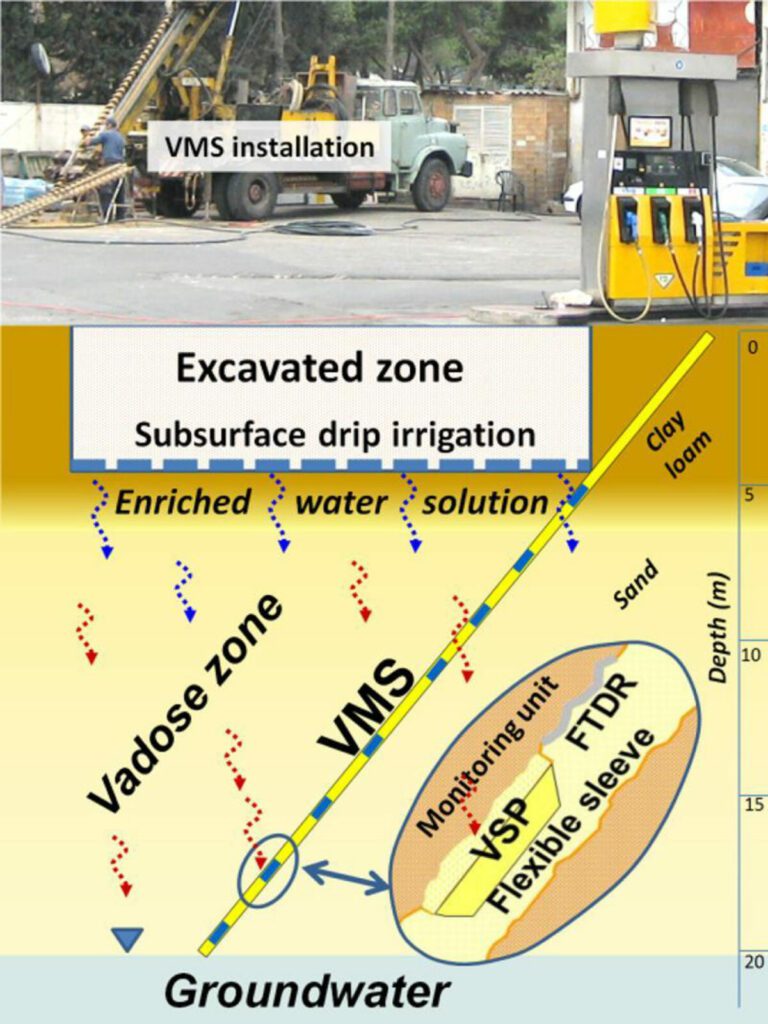Core Ideas
- Controlled infiltration of amended water enhanced bioremediation.
- Remediation strategy in contaminated vadose zone was evaluated in real time.
- Vadose zone hydrochemical and isotopic properties were monitored in situ.
- CSIA was applied to aqueous and vapor phases for attenuation assessment.
Abstract
In situ bioremediation of a contaminated vadose zone requires implementing hydraulic and chemical conditions that stimulate the development of indigenous bacteria capable of degrading contaminants in the subsurface. We investigated enhanced biostimulation of a gasoline‐contaminated deep vadose zone through nutrient‐ and O2–amended water infiltration. A vadose zone monitoring system (VMS) provided real‐time observations of the treatment process’s effect on hydrocarbon attenuation. The VMS data included continuous measurements of variations in water content, concentrations and isotopic compositions of methyl tert‐butyl ether and benzene, toluene, ethylbenzene, and xylene in pore‐water and gas phases, and concentrations of O2 and CO2 in the vadose zone gas phase. Real‐time observations from the unsaturated zone enabled interactive adjustment of the remediation strategy and improved biostimulation conditions for biodegradation of the target compounds. In the course of three infiltration events that included infiltration of an O2– and nutrient‐enriched water solution, a significant reduction in contaminant mass was observed across the unsaturated zone.
Graphical Abstract
